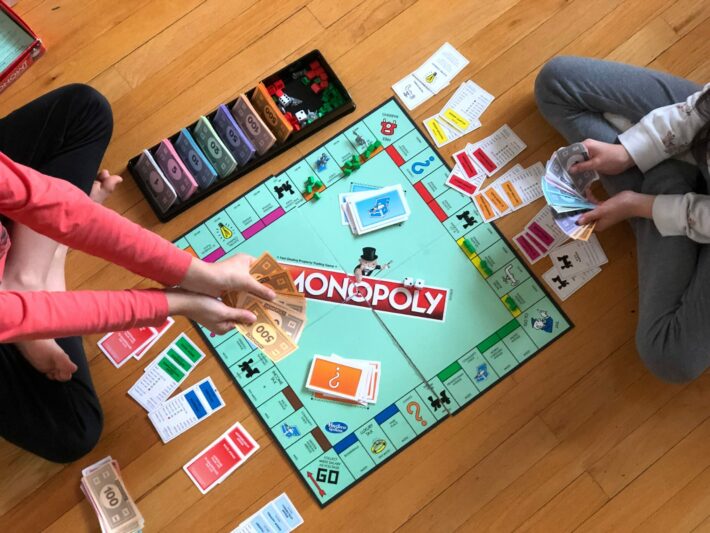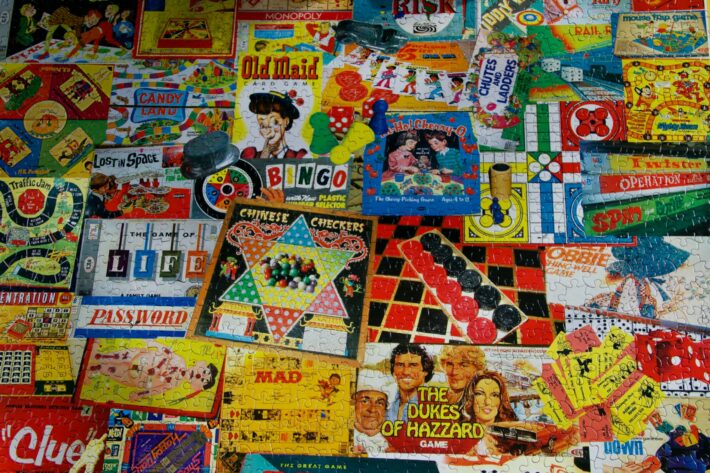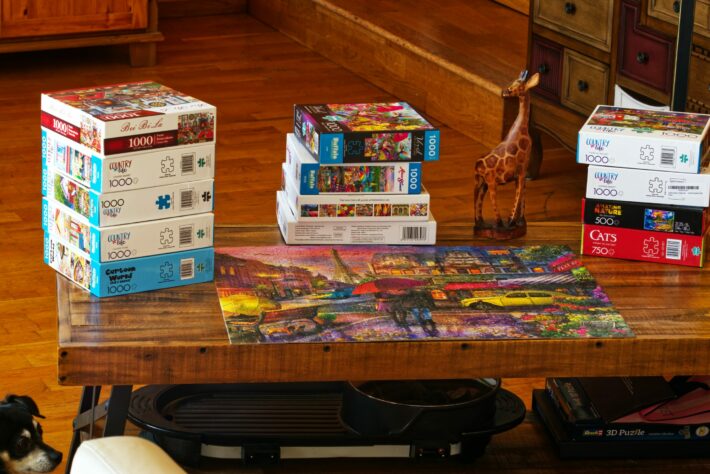Step back in time to the vibrant and nostalgic era of the 90s, when board games were a cherished form of entertainment for many. From intense strategy games to light-hearted party favorites, the 90s introduced a wave of board games that captured the hearts and imaginations of players worldwide.
We’ll take a journey through the past and explore the captivating world of retro board games that defined the 90s. Discover what made these games so popular, their relevance in today’s gaming landscape, and the impact they had on shaping the board game culture we know today.
Which board games defined the 90s era of gaming?
The 90s witnessed the rise of several iconic board games that left a lasting impact on the industry. Games like “Settlers of Catan,” with its innovative resource management and trading mechanics, revolutionized strategic gameplay. Additionally, “Magic: The Gathering” introduced the world to collectible card games, captivating players with its intricate gameplay and endless deck-building possibilities.
| Board Game | Description | Key Features and Impact |
|---|---|---|
| Trivial Pursuit | A trivia game that tests players’ knowledge in various categories | Popularized trivia games, became a staple of game nights |
| Pictionary | A drawing and guessing game where players sketch to convey words and phrases | Introduced a unique and interactive gameplay experience |
| Magic: The Gathering | A collectible card game with a vast array of cards and strategic gameplay | Revolutionized the trading card game genre, fostering a dedicated player base |
| Settlers of Catan | A resource management and trading game set on an ever-changing island | Introduced innovative mechanics and strategic gameplay, played a crucial role in popularizing Euro-style board games |
| HeroQuest | An adventure-based game with customizable characters and intricate miniatures | Pioneered the dungeon-crawling genre, blending role-playing elements with board game mechanics |
What made retro board games so popular in the 90s?
One of the reasons retro board games gained immense popularity in the 90s was their ability to bring people together. These games offered a chance for friends and family to gather around a table, engage in friendly competition, and create lasting memories. Moreover, the simplicity and accessibility of these games made them appealing to a wide range of audiences.
Are 90s board games still relevant and enjoyable today?

Absolutely! While modern board games have certainly evolved, there is still a special charm and appeal to the retro board games of the 90s. Many of these games have stood the test of time and continue to be loved and played by enthusiasts today. Their timeless gameplay mechanics and nostalgic appeal make them a fantastic addition to any board game collection.
How did technology influence board games in the 90s?
The 90s saw significant advancements in technology, which inevitably influenced the board game industry. While video games gained popularity, board game designers began incorporating electronic components into their creations. This resulted in games like “Atmosfear,” an interactive horror-themed board game that utilized a VHS tape for atmospheric gameplay elements.
Where can you find and purchase retro board games from the 90s?
If you’re itching to get your hands on some classic 90s board games, there are various avenues to explore. Online marketplaces like eBay and Amazon offer a wide selection of retro board games, often at affordable prices. Thrift stores, garage sales, and local board game conventions can also be treasure troves for finding hidden gems from the 90s.
Did the 90s introduce any innovative mechanics or gameplay elements?
Indeed, the 90s witnessed the introduction of numerous innovative mechanics and gameplay elements. Games like “HeroQuest” brought adventure to the tabletop, allowing players to embark on quests with customizable characters and intricate miniatures. Additionally, “Scattergories” challenged players’ creativity and quick thinking with its unique word-based gameplay.
Who were the most influential game designers of the 90s?
The 90s showcased the talents of many influential game designers who left a significant mark on the industry. Richard Garfield, the mastermind behind “Magic: The Gathering,” revolutionized card game design and mechanics. Klaus Teuber, the creator of “Settlers of Catan,” introduced a new wave of strategic and immersive gameplay.
What role did licensed and themed board games play in the 90s?

Licensed and themed board games played a significant role in shaping the board game landscape of the 90s. These games capitalized on popular franchises and characters from various media, offering fans a chance to immerse themselves in their favorite worlds. Here are some key aspects of the role played by licensed and themed board games in the 90s:
-
Increased Engagement: Licensed board games allowed fans to interact with their beloved franchises tangibly and interactively. Whether it was exploring the Star Wars universe or solving mysteries with Sherlock Holmes, these games provided an opportunity for players to actively engage with the characters and narratives they cherished.
-
Familiarity and Appeal: By leveraging popular intellectual properties, licensed and themed board games had an inherent advantage in attracting players. The familiarity of well-known characters and settings created an instant appeal, drawing in both fans of the franchise and those looking for a unique gaming experience.
-
Diverse Gameplay: Licensed and themed board games came in various genres and styles, catering to a wide range of interests. From adventure-based games with miniatures to strategy games set in fictional worlds, these games offered diverse gameplay experiences that resonated with different types of players.
-
Cross-Promotion: Board games based on popular franchises benefited from cross-promotion with other forms of media. Movie releases, TV shows, and books often generated additional interest in the corresponding board games, driving sales and attracting new players.
-
Nostalgic Value: Licensed board games from the 90s often hold a special place in the hearts of those who grew up with them. Playing these games evokes a sense of nostalgia, reminding players of the enjoyment they had with the franchise in other forms of media.
How did the 90s board game culture compare to previous decades?
The 90s marked a transition in the board game culture, embracing a wider audience and incorporating new and exciting gameplay elements. It was a decade that saw a blend of classic mechanics and innovative designs, bridging the gap between traditional and modern board games. The social aspect of board gaming also flourished during this time, with board game cafes and clubs becoming popular gathering spots for enthusiasts.
Can retro board games from the 90s be considered collectors’ items?
Retro board games from the 90s have gained a significant following among collectors. Limited edition releases, rare variants, and games associated with popular franchises can hold substantial value in the collector’s market. If you’re a passionate collector or looking to invest in unique pieces of gaming history, exploring the realm of 90s board games can be a rewarding endeavor.
Are there any hidden gems among the lesser-known 90s board games?
Without a doubt! While games like “Monopoly” and “Clue” dominated the mainstream market, the 90s also brought forth lesser-known gems that deserve recognition. Titles like “Robo Rally” and “Scotland Yard” offer distinctive gameplay experiences that often fly under the radar but are highly enjoyable for those willing to discover them.
What impact did the rise of video games have on board games in the 90s?
The rise of video games in the 90s undoubtedly influenced the board game industry. Board game designers sought to differentiate their creations by incorporating elements inspired by video games. This led to the development of games like “Battletech” and “Axis & Allies,” which embraced strategic gameplay reminiscent of video game war simulations.
How did board game packaging and artwork evolve in the 90s?

The 90s witnessed a shift in board game packaging and artwork, embracing bolder and more eye-catching designs. Many games featured vibrant and detailed illustrations that captured the essence of their themes, immersing players from the moment they laid eyes on the box. This era introduced a new level of visual appeal to board games, enhancing their overall presentation.
What were some of the best-selling board games of the 90s?
During the 90s, numerous board games became massive hits and captured the hearts of players worldwide. Here are some of the best-selling board games from that era:
-
Trivial Pursuit: This iconic trivia game challenged players’ knowledge in various categories and became a staple of game nights everywhere.
-
Pictionary: Combining drawing and guessing, Pictionary became a party favorite, with players frantically sketching to convey words and phrases.
-
Cranium: This multi-activity game encompassed trivia, creativity, and performance, engaging players in a wide range of challenges.
-
Scattergories: Testing players’ quick thinking and creativity, Scattergories tasked participants with coming up with unique words that fit specific categories and starting letters.
-
Battleship: The classic naval warfare game, where players strategically guessed the locations of their opponents’ ships, entertained millions with its intense battles.
-
Carcassonne: This tile-laying game allowed players to build the landscape of a medieval city, fostering strategic placement and territorial expansion.
-
Magic: The Gathering: The revolutionary collectible card game introduced a new level of complexity and customization, captivating players with its vast array of cards and strategic gameplay.
-
Axis & Allies: Set during World War II, this strategy game required players to navigate diplomacy and combat to achieve global domination.
-
HeroQuest: Embarking on epic quests with customizable characters and intricate miniatures, HeroQuest brought the adventure genre to the tabletop.
-
Settlers of Catan: This game revolutionized resource management and trading mechanics, allowing players to build and develop civilization on an ever-changing island.
Can playing retro board games from the 90s evoke nostalgia?
Undoubtedly! Playing retro board games from the 90s has a remarkable way of transporting us back to a time filled with fond memories and simpler pleasures. The nostalgia-inducing gameplay, artwork, and components can evoke a sense of warmth and excitement, reminding us of the joy these games brought during our younger years.
Concluding Remarks: A Journey into 90s Board Games
As we conclude our journey into the world of retro board games that captured the essence of the 90s, we are reminded of the timeless appeal and enduring magic these games possess. Whether you’re a seasoned board game enthusiast or a newcomer to the hobby, exploring the classics from this iconic era can be a rewarding and enjoyable experience. So gather your friends, dust off those game boxes, and rediscover the magic that made the 90s such an extraordinary time for board gaming.